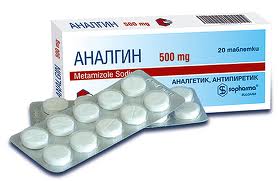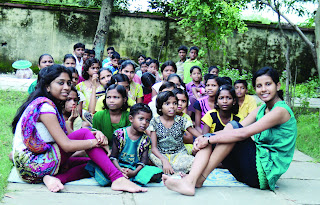Towards Pro-Active Policing
“Security requires timely access to relevant intelligence and other information that can be sensed and acted upon. Given the nature of threat to security, regional and cross-institutional data sharing becomes prime necessity towards effective crime response management.”
With the advent of an era of transparency and accountability, we cannot simply rely on defensive approaches and measures of conventional policing. Our efforts must involve measures for quick response and pro-active policing with specialised training. We also need to disrupt criminals’ plans and diminish the impact of man-made disasters through measures that enhance the resilience of our economy and critical infrastructure. Recent terrorist attacks indicate that criminals have been using latest IT gadgets and tools to commit heinous crime. In order to effectively counter such malicious designs of ultras, security forces should also leverage Information and Communication Technology and harness its potential to maximum in a well planned manner.
How do you see the move towards automating and integrating the police stations through the Crime and Criminal Tracking Networking System (CCTNS)?
To protect the citizen, security must be a responsibility shared across the entire nation. As we further develop a national culture of preparedness, modern ICT tools are required by the police forces to counter the emerging threats. Therefore, it is an appreciable effort of MHA to integrate all Police Stations and higher offices throughout the country with an objective to bring in uniformity of main functionalities and networking for timely sharing of crime and criminals’ information. This would avoid the deployment of a series of disjoined capabilities of different states to serious issues and choosing to establish strategies around broad, functional components within those areas, important to centre and states. This approach shall provide a sensible balance between integration of solution with important key functions, giving enough flexibility to the states to focus on local requirements to enable rapid deployment of security enhancing capabilities.
What are the possible outcomes of this Rs 2000 Crore project and how do you think it is going to change the way policing is done in the country?
While law enforcement agencies collect vast amount of data, only a very small part of this information can be effectively handled, retrieved or absorbed from the present manual files system. This project will allow law enforcement agencies to integrate and leverage their data for more informed decision making during critical as well as normal policing activities. This project, which is being operated and managed by states nationwide, shall provide services to law enforcement forces, emergency responders, and other public safety officials. Once, completely rolled out nationwide, it would help develop joint strategies and policies, procedures, and other means to operate across agencies and state boundaries for improved citizen service delivery and internal efficiency.
How prepared is the Chattisgarh Police, in terms of innovation and technology, to meet the increased demands of security in the State?
State has given focused attention on capacity building. As a part of this strategy, the department is taking up a statewide campaign for capacity building for the entire police machinery assigned with multiple roles. In this very ambitious training programme, the entire police force in the state would undergo basic IT skills training as a part of CCTNS project. The training has begun for the first batch of 3000 police personnel in 21 district headquarters and State Crime Records Bureau (SCRB) at Police Head Quarter (PHQ) in Raipur.
Besides this, Common Integrated Police Application (CIPA) is being implemented in 10% of Police Stations of the state. First information reports (FIRs) are written in digital form and investigations are carried out partially using ICT tools. We have also established a state-of-the-art Finger Print Identification facility in the state. Cyber Cafe Rules have been notified to facilitate identification of Cyber Cafe users and check illegal use of computer resources. A state level Cyber Police Station is functional in PHQ and a Cyber Forensic Laboratory is in the stage of development to aid in investigation of cyber crime. Thus, Chhattisgarh police is much better prepared in terms of adaption of innovation and technology.
Can you tell us about your road-map for enhancing public safety and security with ICT intervention?
Pursuit of security is a never-ending activity. The state has its set goals and priorities in terms of quickness in response, degree of protection offered to citizens & VIPs and state assets. For us, the delivery of enhanced security for citizens and property through the use of ICT, is of vital importance.
Our road map includes ‘secured networking for police’. For this, we are developing, in the state, a hybrid network as part of Chhattisgarh State Wide Area Network (CGSWAN) connecting inaccessible Police Stations using Captive Hub/VSAT, Wi-Max, and terrestrial network lines with the help of our state agency ChiPS. Our main thrust is on advanced ‘Data Management and Analysis tools’ as mainstay of the intelligence. State roadmap also includes advance ICT intervention for cyber crime investigation, surveillance in traffic management and physical asset security.
Common Integrated Police Application (CIPA) was not very successful. What were its shortcomings?
The main effort under CIPA was aimed at automating the processes of Police Stations with an objective to capture all the primary data relating to crime and criminals, and improving efficiency of the police stations. At present, it is implemented only in about 20% of police stations across the states/UTs. As such, there was no networking component for sharing and consolidating information either horizontally or vertically at appropriate levels. Focus of the entire programme was more on the data gathering and storing at thana level only. As a result, CIPA faces the risk of non-sharing of information because of deployment of stand-alone systems. Secondly, there was no web presence for the citizens to track down the progress of their complaints. Thirdly, it was a largely centralised project. For every troubleshooting, one had to approach National Informatics Centre (NIC) at Delhi.
Please elaborate on the challenges faced while deploying new technology in the work flow of police department.
The advent of Information Technology as a highly leveraged enabling tool and force- multiplier has now redefined the fundamentals of policing and changed its mechanism. This information age paradigm shift is characterised by enhanced citizen expectations from the police force. Undoubtedly, the ICT tools can assist Police in delivering high level of safety and security. The best practices to achieve the greatest value from technology in this area are being redefined continuously, which in itself poses a major challenge to the security forces in terms of adaptability.
Capacity building is another field which requires a 360 degree change in its approach for effective induction of ICT tools and reduce digital divide. A cultural shift from its traditionally rigid and opaque style of functioning to a more accessible, user-friendly and transparent one needs to be managed well, keeping in mind the human tendencies to resist change. Thus, the oft criticized police can reap the benefits of the ICT and increase its productivity by effective deployment of limited resources at its end.



















